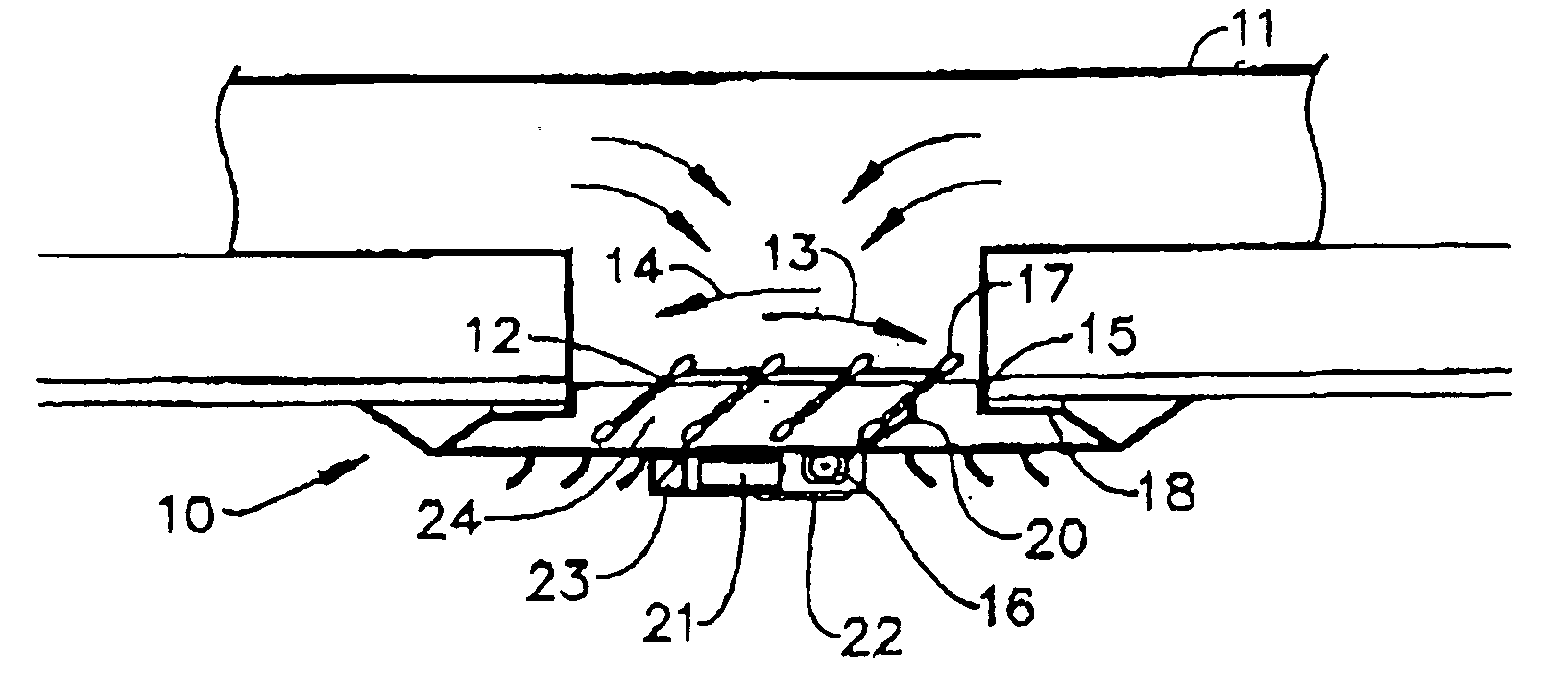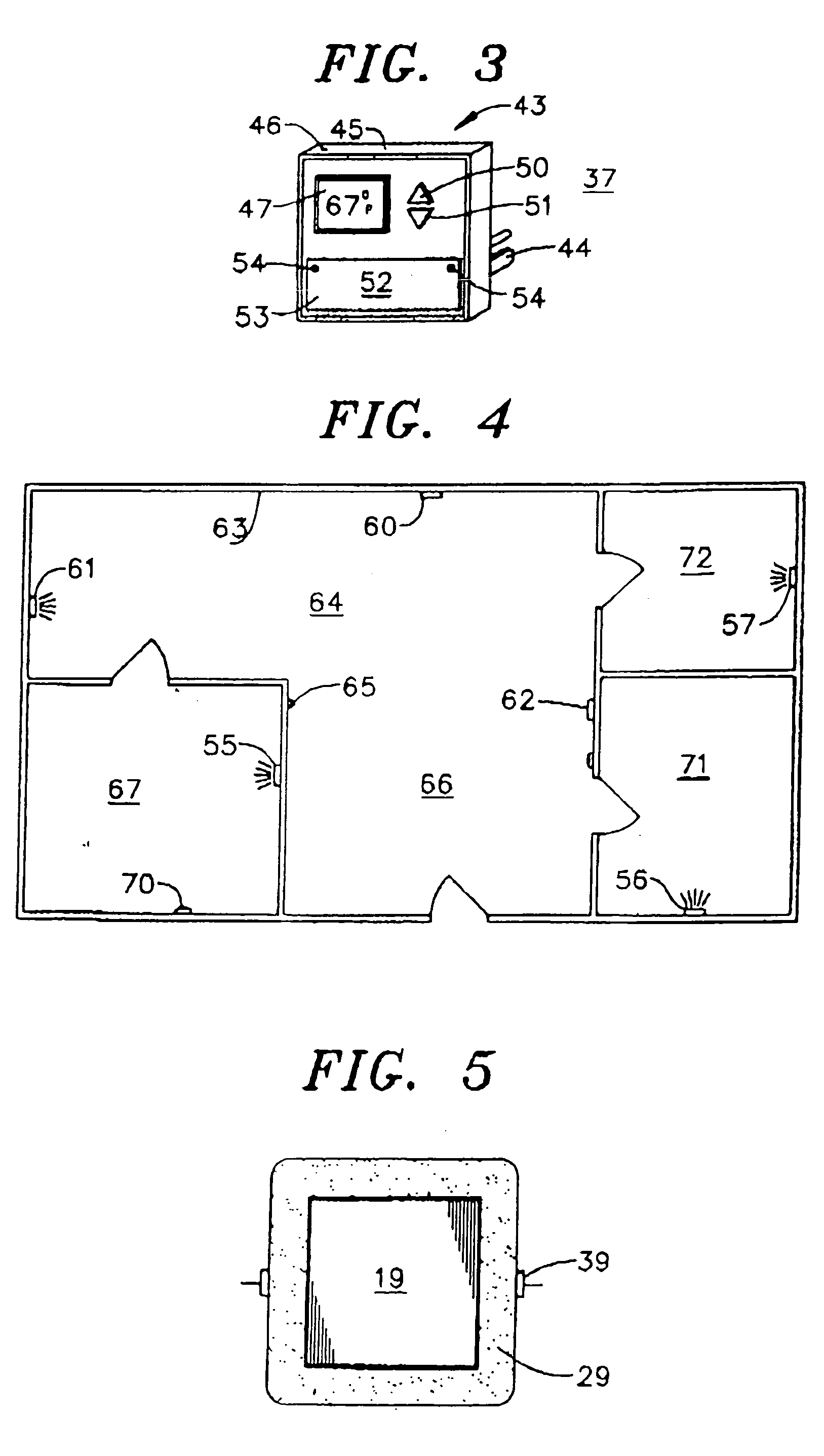Electromagnetic frequency-controlled zoning and dampering system
a frequency-controlled zoning and dampering technology, applied in ventilation systems, lighting and heating apparatus, heating types, etc., can solve problems such as ductulation, or the sizing of ductwork to maintain proper static pressure, and inability to maintain an equal temperature in multi-level dwellings, heating or cooling, etc., to achieve minimal motor abilities, long lifespan, and energy saving
- Summary
- Abstract
- Description
- Claims
- Application Information
AI Technical Summary
Benefits of technology
Problems solved by technology
Method used
Image
Examples
Embodiment Construction
[0035] For a more complete appreciation of the invention, attention is invited to FIG. 1 which shows a ceiling diffuser 10 in a heating and cooling air flow duct 11. In accordance with a feature of this invention, the diffuser 10 has a horizontally mounted parallel array of damper vanes 12 that are mounted for pivotal movement in the direction of arrows 13, 14, in an air discharge opening 15 that is formed in the duct 11. The margin of the duct 11 that forms the opening 15 is provided with a foam seal 18. A polystyrene foam plastic, for example, is a suitable material for the seal 18.
[0036] The individual damper vanes 12, moreover, are ganged together for selective joint movement in the directions of the arrows 13, 14 in order to control air flow through the discharge opening 15. These damper vanes 12 are formed preferably of plastic material. Plastic vanes 12 in the heating and cooling duct 11 are particularly suited to the practice of the invention because they are light in weigh...
PUM
 Login to View More
Login to View More Abstract
Description
Claims
Application Information
 Login to View More
Login to View More - R&D
- Intellectual Property
- Life Sciences
- Materials
- Tech Scout
- Unparalleled Data Quality
- Higher Quality Content
- 60% Fewer Hallucinations
Browse by: Latest US Patents, China's latest patents, Technical Efficacy Thesaurus, Application Domain, Technology Topic, Popular Technical Reports.
© 2025 PatSnap. All rights reserved.Legal|Privacy policy|Modern Slavery Act Transparency Statement|Sitemap|About US| Contact US: help@patsnap.com



